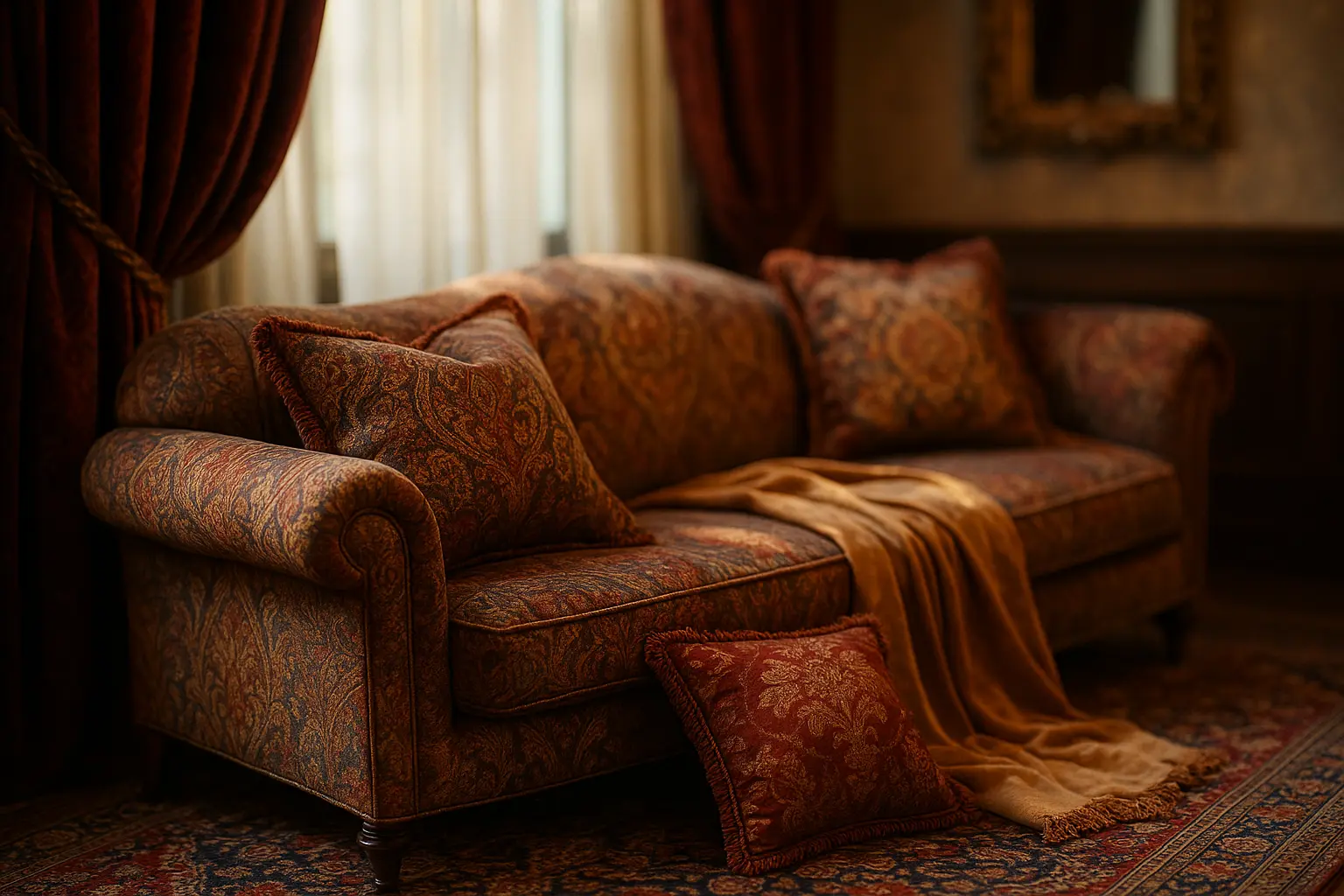When we consider the magic behind beautifully curated interior spaces, our minds may first drift to furniture, paint colors, or even architectural design. Yet, there’s an unsung hero quietly weaving everything together—fabric and textiles. As storytellers in the canvas of your home, textiles aren’t just about curtains or sofa covers. They’re about crafting a narrative, adding personality, and sometimes, sparking pure joy. In this modern world of design, we, as creators, have the power to transform the mundane into the extraordinary using textiles as our medium.
From bold patterns to subtle textures, the choices are as endless as they are exhilarating. Each decision we make in choosing a fabric speaks volumes about the desired style and ambiance. Join us on a journey through the textile universe, where we’ll explore how these materials can redefine what it means to design a space.
The Power of Textiles in Defining Aesthetic
When we step into a room, what greets our senses first? Often, it’s not the walls or the furniture, but the subtle embrace of textiles. These elements hold a unique power in shaping the aesthetic of a space. From the luxurious drape of velvet curtains to the rugged charm of a woven rug, each piece contributes significantly to the overall feel.
Textiles offer a versatile way to add dimension. Consider the vibrancy of a bold pattern across a throw pillow or the understated elegance of linen drapes catching the afternoon light. The textures these materials introduce can make a space feel cozy, sophisticated, or even whimsical, depending on your intent.
Fabrics are not just about patterns and colors; they are about touch and the tactile experience. The soft embrace of a cashmere blanket or the cool touch of a silk coverlet becomes a sensory bridge between design and living.
Moreover, textiles provide an opportunity to play with contrast and harmony. Pairing different materials, like the juxtaposition of smooth leather against rough-hewn cotton, can create intriguing visual play, enhancing the overall design narrative. Let us not overlook the role of textiles in acoustics and temperature regulation—elements crucial in creating a comfortable living environment.
Choosing the Right Fabrics: A Designer’s Guide
Choosing textiles for a room is akin to selecting the right words for a story. Each material, color, and pattern speaks a language that can transform the space. As designers in this landscape, we must curate with intent, ensuring every piece aligns with the broader narrative.
First, consider the functionality. Will the fabric be used in a high-traffic area? Then durability is key. Materials like microfiber or tightly woven cotton hold up well under frequent use. For more decorative elements, such as curtains in a less trafficked room, we might opt for delicate silks or rich brocades.
Next comes the visual appeal. Patterns can be bold or subtle, geometric or organic. The style of the room will guide this choice. A modern, minimalist space may benefit from muted tones and textures, while a bohemian room thrives on vibrant colors and eclectic patterns.
The third consideration is texture. Mixing and matching different textures can bring depth and interest. Pairing a soft velvet with a coarse linen can add a layer of sophistication and tactile engagement.
Finally, we must respect the environment. Sustainable choices in fabric selection, such as organic cotton or recycled materials, can enhance not only the aesthetic but also the ecological footprint of a design. Balancing beauty with responsibility, we build a future conscious of both design and sustainability.
Integrating Textiles with Existing Interiors
Redesigning a room doesn’t always mean starting from scratch. Often, integrating new textiles with existing interiors can breathe fresh life into a space, weaving in style and identity without a full overhaul.
Begin by assessing the current furniture and design elements. Identify areas where textiles can enhance or transform. Add a throw blanket over a tired sofa, or swap out old drapes for curtains that introduce a new color or pattern.
Consider using textiles to create focal points. A bold area rug can anchor a seating arrangement, while an intricately patterned tapestry might serve as a conversation-starting wall hanging.
Textiles also provide a means to introduce seasonal elements. Lightweight, breathable fabrics offer a summery vibe, while heavier materials like wool or fleece can bring warmth in the colder months.
Engaging with different textiles allows us to experiment with layering, a technique that adds visual interest and depth, especially in neutral or monochrome spaces. A combination of cushions, throws, and rugs in varying patterns and textures can create a harmonious yet dynamic environment.
In this integration, balance becomes key. The harmony between new textiles and existing elements will dictate the room’s energy. Let us remember that in this dance of colors and materials, textiles are both a statement and a whisper, shaping and reshaping, without overpowering.
In the grand symphony of interior design, textiles play a pivotal role in infusing personality and character into spaces. They are the storytellers, narrating the tales of comfort, luxury, and style within the walls of our homes.
As we’ve journeyed through the world of fabrics and materials, we’ve seen how every choice—from the simplest curtain to the most elaborate quilt—can redefine a room. Textiles allow us to create environments that reflect our identities, enhance our comfort, and inspire creativity.
Whether it’s through the hues we choose, the patterns we adore, or the textures we embrace, textiles are our versatile allies in interior design. They offer a canvas onto which we can project our dreams, quietly enhancing our everyday experiences.
So, let us continue to explore, craft, and redefine our spaces with textiles. In doing so, we not only shape our environments but also enrich our lives, turning the ordinary into the extraordinary one fabric at a time.
FAQ
What role do fabrics and textiles play in interior design?
Fabrics and textiles are essential in interior design as they add texture, color, and warmth to a space. They can soften hard surfaces, create visual interest, and help define the overall aesthetic of a room.
How can textiles influence the mood of a room?
The choice of textiles can significantly impact the ambiance of a room. Soft, plush fabrics like velvet can create a cozy and luxurious feel, while lightweight linens can evoke a sense of airiness and relaxation.
What are some popular types of fabrics used in interior design?
Commonly used fabrics in interior design include cotton, linen, silk, wool, and synthetic blends. Each material offers unique properties in terms of durability, texture, and appearance, making them suitable for various design purposes.
How can textiles be used to add color to a room?
Textiles can introduce color through upholstery, curtains, rugs, and cushions. By selecting fabrics with vibrant hues or patterns, you can infuse a room with color without committing to permanent changes like painting walls.
What should be considered when selecting textiles for a space?
When choosing textiles, consider the room’s function, existing color palette, and desired aesthetic. Durability and maintenance are also crucial, especially in high-traffic areas or homes with children and pets.


